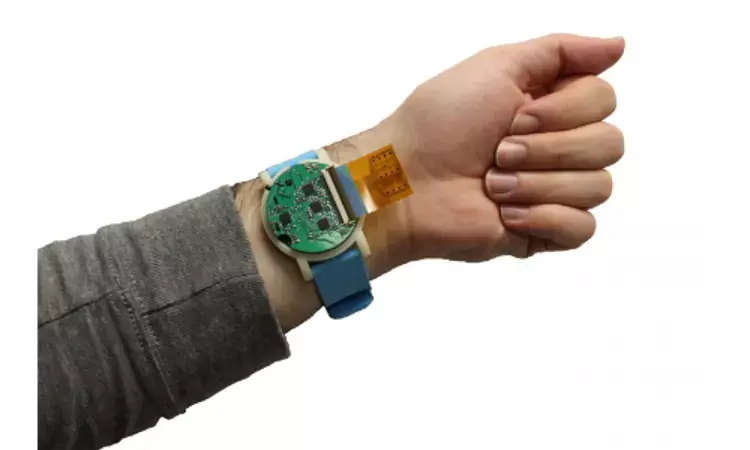- Home
- Medical news & Guidelines
- Anesthesiology
- Cardiology and CTVS
- Critical Care
- Dentistry
- Dermatology
- Diabetes and Endocrinology
- ENT
- Gastroenterology
- Medicine
- Nephrology
- Neurology
- Obstretics-Gynaecology
- Oncology
- Ophthalmology
- Orthopaedics
- Pediatrics-Neonatology
- Psychiatry
- Pulmonology
- Radiology
- Surgery
- Urology
- Laboratory Medicine
- Diet
- Nursing
- Paramedical
- Physiotherapy
- Health news
- Fact Check
- Bone Health Fact Check
- Brain Health Fact Check
- Cancer Related Fact Check
- Child Care Fact Check
- Dental and oral health fact check
- Diabetes and metabolic health fact check
- Diet and Nutrition Fact Check
- Eye and ENT Care Fact Check
- Fitness fact check
- Gut health fact check
- Heart health fact check
- Kidney health fact check
- Medical education fact check
- Men's health fact check
- Respiratory fact check
- Skin and hair care fact check
- Vaccine and Immunization fact check
- Women's health fact check
- AYUSH
- State News
- Andaman and Nicobar Islands
- Andhra Pradesh
- Arunachal Pradesh
- Assam
- Bihar
- Chandigarh
- Chattisgarh
- Dadra and Nagar Haveli
- Daman and Diu
- Delhi
- Goa
- Gujarat
- Haryana
- Himachal Pradesh
- Jammu & Kashmir
- Jharkhand
- Karnataka
- Kerala
- Ladakh
- Lakshadweep
- Madhya Pradesh
- Maharashtra
- Manipur
- Meghalaya
- Mizoram
- Nagaland
- Odisha
- Puducherry
- Punjab
- Rajasthan
- Sikkim
- Tamil Nadu
- Telangana
- Tripura
- Uttar Pradesh
- Uttrakhand
- West Bengal
- Medical Education
- Industry
'Wristwatch' device may help improve athletic performance, prevent injury

Metabolites are markers that can be monitored to assess an individual's metabolism. The trainers and health professionals can assess the performance of an athlete if his metabolite levels are outside of normal parameters. This could also be used to help tailor training efforts to improve physical performance.
A device of the size of a wristwatch has been developed by engineering researchers that can monitor an individual's body chemistry to help improve athletic performance and identify potential health problems. The device can be used for everything from detecting dehydration to tracking athletic recovery, with applications ranging from military training to competitive sports.
A replaceable strip on the back of the device is embedded with chemical sensors. That strip rests against a user's skin, where it comes into contact with the user's sweat. Data from the sensors in the strip are interpreted by hardware inside the device, which then records the results and relays them to a user's smartphone or smartwatch.
"This technology allows us to test for a wide range of metabolites in almost real-time athletic performance," says Michael Daniele, co-corresponding author of a paper on the work and an assistant professor of electrical and computer engineering at North Carolina State University and in the Joint Department of Biomedical Engineering at NC State and the University of North Carolina at Chapel Hill.
"For this proof-of-concept study, we tested sweat from human participants and monitored for glucose, lactate, pH and temperature," Daniele says.
"The device is the size of an average watch, but contains analytical equipment equivalent to four of the bulky electrochemistry devices currently used to measure metabolite levels in the lab," Daniele says. "We've made something that is truly portable so that it can be used in the field."
While the work for this paper focused on measuring glucose, lactate and pH, the sensor strips could be customized to monitor for other substances that can be markers for health and athletic performance - such as electrolytes.
"We're optimistic that this hardware could enable new technologies to reduce casualties during military or athletic training, by spotting health problems before they become critical," Daniele says. "It could also improve training by allowing users to track their performance over time. For example, what combination of diet and other variables improves a user's ability to perform?"
The researchers are now running a study to further test the technology when it is being worn by people under a variety of conditions.
"We want to confirm that it can provide continuous monitoring when in use for an extended period of time," Daniele says.
"While it's difficult to estimate what the device might cost consumers, it only costs tens of dollars to make. And the cost of the strips - which can last for at least a day - should be comparable to the glucose strips used by people with diabetes.
"We're currently looking for industry partners to help us explore commercialization options for this technology," Daniele says.
For further reference log on to :
Dr Kamal Kant Kohli-MBBS, DTCD- a chest specialist with more than 30 years of practice and a flair for writing clinical articles, Dr Kamal Kant Kohli joined Medical Dialogues as a Chief Editor of Medical News. Besides writing articles, as an editor, he proofreads and verifies all the medical content published on Medical Dialogues including those coming from journals, studies,medical conferences,guidelines etc. Email: drkohli@medicaldialogues.in. Contact no. 011-43720751


